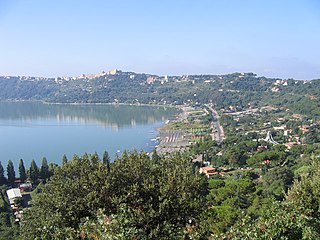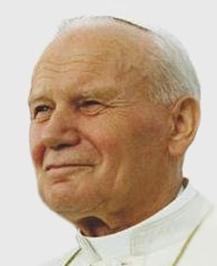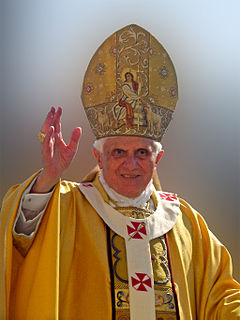
Vatican City, officially Vatican City State, is an independent city-state enclaved within Rome, Italy. Established with the Lateran Treaty (1929), it is distinct from yet under "full ownership, exclusive dominion, and sovereign authority and jurisdiction" of the Holy See. With an area of 44 hectares, and a population of about 1,000, it is the smallest sovereign state in the world by both area and population.

The Vatican City State is a neutral nation, which has not engaged in any war since its formation in 1929 by the Lateran Treaty. It has no formal military compact or agreement with neighbouring Italy, although responsibility for defending the Vatican City from an international aggressor is likely to lie primarily with the Italian Armed Forces. Although the Vatican City State has never been at war, its forces were exposed to military aggression when it was bombed during World War II, and whilst defending Vatican property in Rome during the same conflict.

A prisoner in the Vatican or prisoner of the Vatican is how Pope Pius IX was described following the capture of Rome by the armed forces of the Kingdom of Italy on 20 September 1870. Part of the process of Italian unification, the city's capture ended the millennial temporal rule of the popes over central Italy and allowed Rome to be designated the capital of the new nation. The appellation is also applied to Pius' successors through Pope Pius XI.
The properties of the Holy See are regulated by the 1929 Lateran Treaty signed with the Kingdom of Italy. Although part of Italian territory, some of them enjoy immunities, similar to those of foreign embassies.

The Lateran Palace, formally the Apostolic Palace of the Lateran, is an ancient palace of the Roman Empire and later the main papal residence in southeast Rome.

Camillo Ruini is an Italian cardinal of the Catholic Church. He served as Vicar General of the Diocese of Rome from 1991 to 2008.He was elevated to the cardinalate in 1991.
Palace of the Popes may refer to:
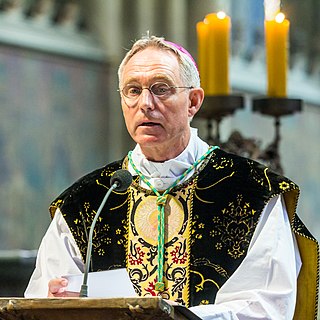
Georg Gänswein is a German prelate of the Catholic Church, who has been Archbishop of Urbs Salvia since 2012, professor of canon law at the Pontifical University of the Holy Cross. He is Prefect of the Papal household, and personal secretary to Pope Emeritus Benedict XVI.

The Papal apartments is the non-official designation for the collection of apartments, which are private, state, and religious, that wrap around a courtyard on two sides of the third (top) floor of the Apostolic Palace in Vatican City.

James Michael Harvey is an American prelate of the Roman Catholic Church. Trained as a diplomat, he served from 1982 to 1998 in the central administration of the Holy See's Secretariat of State. From 1998 to 2012 he managed the pope's household, first for Pope John Paul II and then for Pope Benedict XVI. He was named a bishop in 1998, an archbishop in 2003, and a cardinal in 2012.
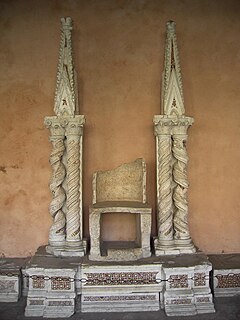
A major basilica is one of the four highest-ranking Roman Catholic church buildings, all of which are also papal basilicas: the Archbasilica of Saint John Lateran, St. Peter's Basilica, the Basilica of Saint Paul Outside the Walls, and the Basilica di Santa Maria Maggiore. All of them are located within the diocese of Rome: St. Peter's Basilica is located in Vatican City and thus within the territory and sovereign jurisdiction of the Holy See. The other three are geographically located in Italian territory, but enjoy extraterritorial status under the Lateran Treaty. The Archbasilica of Saint John in the Lateran is the seat of the Pope and the site of the Papal Cathedra, and is the oldest and first in rank of the major basilicas.

Paolo Romeo STL JCD is a Cardinal and Archbishop emeritus of Palermo. He was appointed to the see of Palermo by Pope Benedict XVI on 19 December 2006.
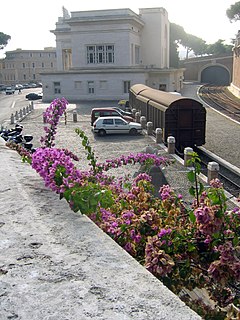
The Vatican Railway was opened in 1934 to serve Vatican City and its only station, Vatican City. The main rail tracks are standard gauge and 300 metres (0.19 mi) long, with two freight sidings, making it the shortest national railway system in the world. Access to the Italian rail network is over a viaduct to Roma San Pietro railway station, and is guaranteed by the Lateran Treaty dating from 1929. The tracks and station were constructed during the reign of Pope Pius XI, shortly after the treaty.
This is an index of Vatican City-related topics.

Holy See–Malaysia relations are foreign relations between the Holy See and Malaysia.

The Palace of the Holy Office is a building in Rome which is an extraterritorial property of Vatican City. It houses the curial Congregation for the Doctrine of the Faith.

The resignation of Pope Benedict XVI occurred on 28 February 2013 at 20:00 CET, after having been announced on the morning of 11 February 2013 directly by himself. Benedict XVI's decision to step down as leader of the Catholic Church made him the first pope to relinquish the office since Gregory XII in 1415, and the first to do so on his own initiative since Celestine V in 1294.
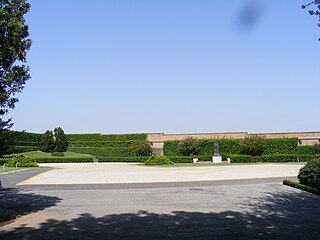
Vatican City Heliport consists of a 25 × 17 m (82 × 56 ft) rectangular concrete landing area linked with a circular parking area. It is used for short journeys from or to Vatican City by the pope and visiting heads of state.


